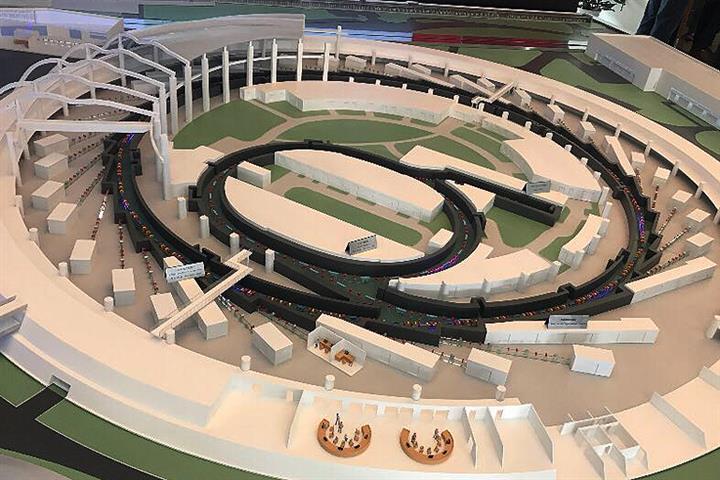 Shanghai to Build Sci-Tech Innovation Center
Shanghai to Build Sci-Tech Innovation Center(Yicai Global) Nov. 9 -- Promoting innovation is an important task for Shanghai to build itself into a science and technology innovation center with global influence, amid a new round of scientific and technological revolution and industrial transformation.
With a series of major scientific research platforms, including the Shanghai Synchrotron Radiation Facility and the Shanghai Supercomputer Center, and multiple colleges and research institutes, Pudong New Area is the core of this sci-tech invention hub.
At a recent briefing held on the 30th anniversary of the opening-up and development of Pudong, Hang Yingwei, the district chief of the new area, told reporters that Pudong is leading construction of the sci-tech innovation center in Shanghai with its Zhangjiang Science City.
All 73 projects in the first phase have started, of which 72 will be completed this year. The 82 projects in the second phase will have kicked off by next month.
The Shanghai Synchrotron Radiation Facility is homed in a building that resembles a nautilus shell in Pudong’s Zhangjiang area. Thanks to the SSRF, some analysis that could not be done or had to be done abroad can now be finished “in front of the house,” according to Prof. Ma Ding of Peking University.
As one of the world’s leading third-generation medium energy synchrotron radiation facilities, the SSRF enabled Chinese biologists who used to rely mainly on foreign synchrotron radiation equipment to carry out research in frontier fields. They have now achieved a number of important results with global impact in the study of protein structures and functions related to epidemic viruses such as avian influenza, Ebola and Zika.
Research Platform
The SSRF has provided an interdisciplinary, comprehensive and multifunctional scientific research platform since it was launched in 2009, according to Huang Yuying, chief engineer of the beamline and experimental station construction project. Fifteen beamlines and 19 experimental stations are in operation in Pudong New Area. It is estimated that the SSRF will have put about 35 beamlines and 60 experimental stations into operation by 2022, and it will be able to receive tens of thousands of users annually.
Science researchers are undoubtedly the most critical element in building a sci-tech innovation system.
The Pudong International Talent Harbor was opened in April last year. A service platform was launched at the same time in the Shanghai Free Trade Zone for foreigners to work in China. Foreigners only need to go to a single window to apply for work and residence permits. The approval process has also become much more efficient, with the approvals process taking just five days.
Pudong has introduced a series of pioneering and breakthrough talent policies in recent years, including relaxing direct employment restrictions for foreign graduates, taking the lead in exploring the development of offshore innovation and entrepreneurship bases for overseas talents in the FTZ, and building an internationally competitive talent pool, Hang said.
In addition, Pudong is building a multi-level, multi-subject and multi-channel talent housing supply system, including accelerating builds of rental properties, building talent apartments, encouraging agencies to act as agents for idle housing rental and providing talent with housing subsidies, the district chief added.
Editors: Chen Juan, Peter Thomas